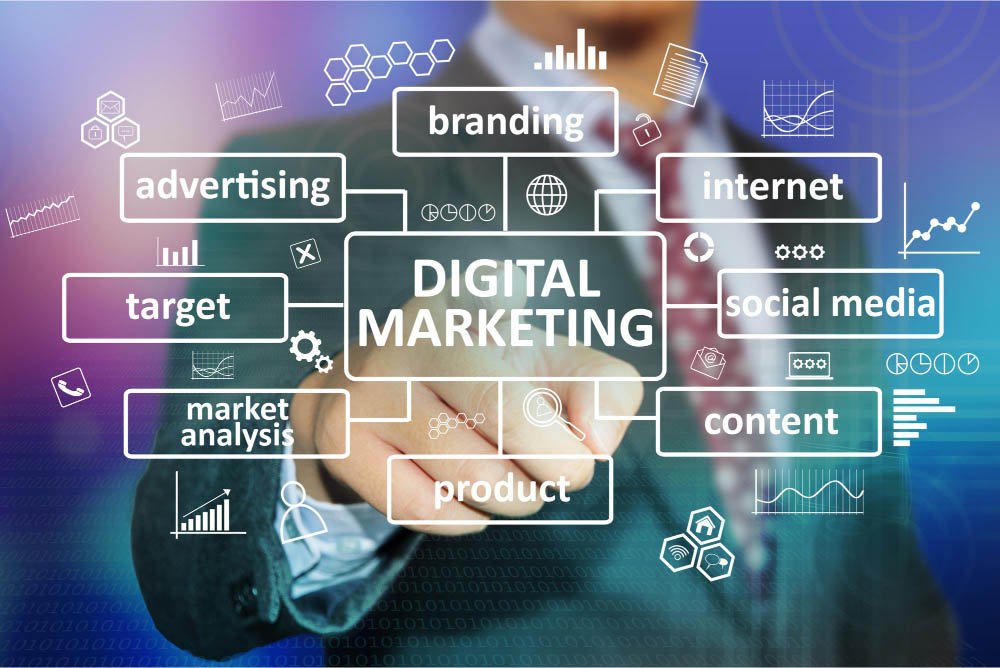Businesses today face an unprecedented digital landscape where traditional marketing methods no longer guarantee success. The rapid evolution of technology, shifting consumer behaviors, and intensifying competition demand a strategic, data-driven approach to digital marketing.
Whether you’re a startup founder, established business owner, or marketing professional, mastering the right digital techniques can be the difference between stagnation and explosive growth.
Destry Henson, a leading marketing expert North Carolina and recognized marketing guru North Carolina, has helped countless businesses transform their digital presence through proven, results-oriented strategies. This comprehensive guide explores five powerful digital marketing techniques that can propel your business forward in today’s competitive marketplace.
The Foundation: Understanding Modern Digital Marketing Success
Digital marketing in 2025 requires more than sporadic social media posts or occasional email blasts. Il faut savoir that successful businesses build comprehensive, integrated strategies that work synergistically across multiple channels. Moreover, the most effective campaigns combine creativity with analytics, personalization with scalability, and innovation with proven fundamentals.
It is important to know that, as a marketing expert North Carolina, Destry Henson emphasizes that digital marketing success stems from understanding your audience deeply, delivering value consistently, and measuring results rigorously. The following five techniques represent core pillars that drive sustainable business growth when implemented strategically and maintained consistently over time.
Technique 1: Strategic Search Engine Optimization (SEO) for Sustainable Growth
Building Long-Term Organic Visibility
Search engine optimization remains one of the most powerful digital marketing investments for businesses seeking sustainable, long-term growth. Néanmoins, SEO in 2025 extends far beyond keyword stuffing and basic on-page optimization. Today’s effective SEO strategies require comprehensive approaches that address technical performance, content quality, user experience, and authoritative link building simultaneously.
First and foremost, technical SEO forms the foundation of visibility. This involves ensuring your website loads quickly across all devices, maintains clean code structures, implements proper schema markup, and provides seamless mobile experiences. Search engines prioritize websites that deliver exceptional user experiences, making technical optimization non-negotiable for competitive rankings.
Furthermore, content optimization has evolved from simple keyword placement to comprehensive topic authority development. Marketing experts like Destry Henson recommend creating content clusters that thoroughly address specific subject areas, demonstrating deep expertise while satisfying diverse user search intents. This approach builds topical authority that search engines reward with improved rankings across multiple related queries.
Local SEO Strategies for Regional Dominance
On the other hand, local SEO presents tremendous opportunities for businesses serving specific geographic markets. De plus, optimizing Google Business Profiles, building local citations, generating authentic customer reviews, and creating location-specific content help businesses dominate local search results and attract high-intent customers actively seeking nearby solutions.
Additionally, voice search optimization has become increasingly important as consumers rely more heavily on voice assistants for local business discovery. Marketing guru North Carolina professionals emphasize optimizing for conversational, long-tail keyword phrases and structuring content to answer common questions directly and concisely. The following SEO elements demand consistent attention for sustained success:
- comprehensive keyword research identifying both high-volume terms and long-tail opportunities;
- strategic internal linking that distributes page authority while guiding user navigation;
- high-quality backlink acquisition from relevant, authoritative industry sources;
- regular content updates and expansions that maintain freshness and relevance;
- continuous technical audits addressing crawl errors, broken links, and performance issues.
These foundational SEO practices, when executed consistently, generate compounding returns over time, reducing dependency on paid advertising while building sustainable organic traffic streams that support long-term business growth and profitability.
Technique 2: Advanced Content Marketing That Builds Authority and Trust

Creating Value-Driven Content Ecosystems
Content marketing has evolved from basic blogging into sophisticated, multi-format strategies that educate, engage, and convert audiences throughout their buying journeys. Nevertheless, successful content marketing requires more than simply publishing articles—it demands strategic planning, audience understanding, and consistent value delivery across diverse formats and platforms.
To start with, developing detailed buyer personas enables content creation that resonates deeply with specific audience segments. Marketing expert North Carolina professionals recommend researching audience pain points, questions, preferences, and behaviors through surveys, interviews, analytics review, and social listening.
This research informs content topics, formats, tone, and distribution strategies that maximize engagement and relevance. Moreover, diversifying content formats ensures you reach audiences with different consumption preferences and learning styles. While written blog posts and articles remain valuable for SEO and deep-dive education, video content, podcasts, infographics, interactive tools, and downloadable resources each serve distinct purposes in comprehensive content strategies.
Strategic Content Distribution and Amplification
Alternatively, creating exceptional content means little without effective distribution strategies that put it in front of target audiences. As a result, successful content marketers develop multi-channel distribution plans encompassing owned media (websites, email lists), earned media (PR, guest posts, social shares), and paid media (sponsored content, social ads) to maximize reach and impact.
In addition, repurposing content across multiple formats and platforms extends its lifespan and reach while improving ROI on creation investments. A comprehensive blog post can become a video script, podcast episode, social media series, email newsletter, and downloadable guide, reaching different audience segments through their preferred channels and formats.
Furthermore, measuring content performance through analytics enables continuous optimization and strategic refinement. Track metrics including organic traffic, engagement rates, time on page, conversion rates, and social shares to identify high-performing topics and formats while eliminating underperforming content investments.
Technique 3: Precision-Targeted Paid Advertising for Accelerated Growth
Mastering Pay-Per-Click Campaign Optimization
Paid advertising provides immediate visibility and traffic while offering unprecedented targeting precision and performance measurement capabilities. However, successful paid campaigns require strategic planning, continuous optimization, and sophisticated audience understanding to generate positive returns on advertising spend consistently.
First of all, platform selection significantly impacts campaign performance and efficiency. Google Ads excels for capturing high-intent search traffic, while social media platforms like Facebook, Instagram, and LinkedIn enable detailed demographic and behavioral targeting.
Marketing guru North Carolina specialists recommend testing multiple platforms initially to identify which channels deliver the best results for your specific business model and target audience.
Moreover, audience segmentation and targeting precision determine campaign efficiency and return on investment. Advanced targeting options enable advertisers to reach specific demographics, interests, behaviors, purchase intents, and even remarketing to previous website visitors who haven’t converted yet. This precision minimizes wasted ad spend while maximizing conversion potential.
Creative Testing and Performance Optimization
On the flip side, compelling ad creative significantly influences click-through rates, engagement, and conversion performance. Consequently, successful advertisers develop multiple ad variations testing different headlines, images, copy angles, and calls-to-action to identify top performers. A/B testing reveals which creative elements resonate most strongly with target audiences while providing data for continuous improvement.
Additionally, conversion tracking and attribution modeling provide essential insights into campaign effectiveness and customer journey complexity. Understanding which campaigns, keywords, and creative variations drive the most valuable conversions enables strategic budget allocation and optimization decisions that improve overall marketing ROI.
Landing page optimization represents another critical element of paid advertising success. Ads that generate clicks waste the budget if landing pages fail to convert visitors into leads or customers. Ensure landing pages maintain message consistency with ads, load quickly, clearly communicate value propositions, and feature prominent calls-to-action that guide visitors toward desired conversions.
Technique 4: Social Media Marketing That Builds Communities and Drives Engagement

Developing Platform-Specific Content Strategies
Social media marketing has matured from simple promotional posting into sophisticated community building and engagement strategies. Nonetheless, social media success requires understanding each platform’s unique characteristics, audience expectations, and algorithm preferences while maintaining consistent brand voice across all channels.
To begin with, platform selection should align with where your target audience actively engages rather than attempting to maintain presence everywhere simultaneously. LinkedIn dominates B2B professional networking, Instagram and TikTok excel for visual storytelling and younger demographics, while Facebook maintains broad demographic reach and robust advertising capabilities.
Focus efforts on platforms where your ideal customers spend time and attention.
Furthermore, content strategy must adapt to each platform’s format preferences and user behaviors. Short-form video dominates TikTok and Instagram Reels, long-form educational content performs well on LinkedIn and YouTube, while Twitter/X favors quick updates and thought leadership. Understanding these platform nuances enables content creation that maximizes native engagement and algorithm favorability.
Authentic Community Engagement and Relationship Building
Conversely, social media success extends beyond broadcasting messages to fostering genuine conversations and community building.
As emphasized by Destry Henson, marketing expert North Carolina, brands that actively engage with followers through comments, direct messages, and user-generated content campaigns build stronger relationships and loyalty than those treating social media as one-way communication channels.
In addition, influencer partnerships and collaborations expand reach to established, engaged audiences while adding credibility through trusted third-party endorsements. Micro-influencers with highly engaged niche audiences often deliver better ROI than celebrity partnerships, particularly for businesses targeting specific demographics or interest groups.
Social media listening tools enable monitoring brand mentions, competitor activities, industry trends, and customer sentiment across platforms. These insights inform content strategy, customer service responses, product development, and competitive positioning while identifying potential crises before they escalate.
The following social media practices strengthen business results:
- consistent posting schedules that maintain visibility without overwhelming followers;
- authentic storytelling that humanizes brands and builds emotional connections;
- responsive customer service that addresses questions and concerns promptly;
- strategic hashtag use that improves discoverability among target audiences;
- performance analytics review that identifies top-performing content for replication.
These community-focused approaches transform social media from promotional channels into valuable relationship-building and customer retention tools that support sustainable business growth.
Technique 5: Email Marketing Automation That Nurtures and Converts
Building Permission-Based Audience Assets
Email marketing remains one of the highest-ROI digital marketing channels, delivering exceptional returns when executed strategically with audience segmentation, personalization, and automation.
Nevertheless, email success requires building quality subscriber lists through valuable content offerings while maintaining consistent communication that balances promotional messages with genuine value delivery.
Initially, list building focuses on attracting subscribers genuinely interested in your content, products, or services through lead magnets like downloadable resources, exclusive content access, or special promotions. Quality consistently trumps quantity—engaged subscribers who open and click emails drive more revenue than large lists of disinterested contacts who ignore or delete messages.
Moreover, segmentation enables personalized communication that resonates with specific subscriber groups based on demographics, behaviors, purchase history, or engagement levels. Sending relevant messages to targeted segments significantly improves open rates, click-through rates, and conversion performance compared to one-size-fits-all broadcast emails.
Advanced Automation Workflows That Scale Personalization
On the contrary, marketing automation transforms email from manual, time-intensive campaigns into sophisticated, trigger-based workflows that deliver timely, relevant messages automatically. Welcome series, abandoned cart reminders, post-purchase follow-ups, and re-engagement campaigns run continuously without manual intervention, nurturing leads and driving conversions while freeing marketers for strategic activities.
Furthermore, behavioral triggers enable highly relevant communication based on subscriber actions. When someone downloads a resource, visits specific website pages, or abandons a shopping cart, automated workflows can send targeted follow-up sequences that guide them toward conversion while maintaining personal relevance at scale.
A/B testing email elements including subject lines, send times, from names, and call-to-action buttons reveals optimization opportunities that incrementally improve campaign performance. Small improvements in open rates or click-through rates compound over time, significantly impacting overall email marketing ROI.
Integrating These Techniques for Maximum Impact
While each technique delivers value independently, their true power emerges when strategically integrated into comprehensive digital marketing strategies. SEO drives organic discovery, content marketing educates and builds authority, paid advertising accelerates visibility, social media fosters community, and email marketing nurtures relationships—each supporting and amplifying the others.
Marketing guru North Carolina specialists like Destry Henson emphasize that successful businesses develop cohesive strategies where these techniques work synergistically. SEO-optimized content gets amplified through social media and paid promotion, generating traffic that converts into email subscribers who receive automated nurture sequences leading to sales and loyalty.
Additionally, consistent measurement and optimization across all channels enables data-driven decision making and continuous improvement. Track key performance indicators for each technique, analyze results regularly, and reallocate resources toward highest-performing activities while eliminating or improving underperforming initiatives.
Frequently Asked Questions
How long does it take to see results from digital marketing?
Results timelines vary by technique and business type. Paid advertising can generate immediate traffic and conversions, while SEO typically requires three to six months for meaningful organic traffic growth. Content marketing and email marketing build momentum over time, with compounding returns increasing as audience size and engagement grow.
Consistent implementation across multiple channels typically shows measurable improvement within the first quarter, with significant growth emerging after six to twelve months of strategic execution.
What budget should small businesses allocate to digital marketing?
Marketing expert North Carolina professionals generally recommend allocating seven to ten percent of revenue toward marketing efforts, with digital channels receiving the majority of this investment. However, specific allocations depend on business stage, industry competitiveness, and growth objectives.
Start-ups might invest more aggressively to build initial market presence, while established businesses maintain steady investments for consistent growth. Begin with modest budgets in paid advertising while building organic channels, gradually increasing spend as you identify highest-performing campaigns and channels.
Can businesses handle digital marketing in-house or should they hire experts?
This depends on internal capabilities, available time, and growth objectives. Small businesses often start with in-house efforts using available tools and resources, hiring specialists or agencies as they grow. Complex techniques like advanced SEO, paid advertising optimization, and marketing automation often benefit from expert guidance, particularly when significant budgets are involved.
Many successful businesses combine in-house teams handling content and community management with external specialists providing strategic guidance and technical expertise in specialized areas.
How important is mobile optimization in digital marketing?
Mobile optimization is absolutely critical—over seventy-five percent of digital marketing interactions now occur on mobile devices. Search engines prioritize mobile-friendly websites in rankings, social media usage overwhelmingly happens on mobile, and email open rates on mobile devices continue increasing.
Businesses without mobile-optimized websites, content, and campaigns sacrifice significant potential traffic, engagement, and conversions while frustrating users with poor experiences.
What metrics should businesses track to measure digital marketing success?
Track metrics aligned with specific business objectives rather than vanity metrics like follower counts. Key performance indicators typically include website traffic (organic and paid), conversion rates, cost per acquisition, customer lifetime value, return on ad spend, email open and click rates, and ultimately revenue attributed to marketing efforts.
Establish baseline metrics, set realistic improvement goals, and review performance regularly to identify trends, opportunities, and areas requiring optimization or strategic adjustment.
How often should businesses update their digital marketing strategies?
While core strategies remain relatively stable, tactics and execution should adapt continuously based on performance data, market changes, and emerging opportunities. Review detailed performance metrics monthly, conduct quarterly strategic assessments, and perform comprehensive annual strategy reviews.
Stay informed about platform algorithm updates, emerging channels, new tools, and shifting consumer behaviors that might require tactical adjustments. The most successful businesses maintain strategic consistency while demonstrating tactical agility in response to new information and changing conditions.
Taking Action on Your Digital Marketing Transformation
The five digital marketing techniques outlined in this guide—strategic SEO, advanced content marketing, precision-targeted paid advertising, community-focused social media, and automated email marketing—represent proven pathways to sustainable business growth when implemented strategically and maintained consistently.
However, knowledge without action produces no results. The businesses that thrive in today’s competitive digital landscape commit to strategic implementation, consistent execution, and continuous optimization across these critical channels.
If you’re just beginning your digital marketing journey or looking to elevate existing efforts to new levels, partnering with experienced professionals can accelerate results while avoiding costly mistakes. Destry Henson, recognized as a leading marketing expert North Carolina and marketing guru North Carolina, has helped countless businesses transform their digital presence and achieve measurable growth through these proven techniques.
The investment in strategic digital marketing delivers compounding returns that support long-term business success, customer acquisition, and sustainable competitive advantage in increasingly digital markets.

